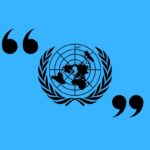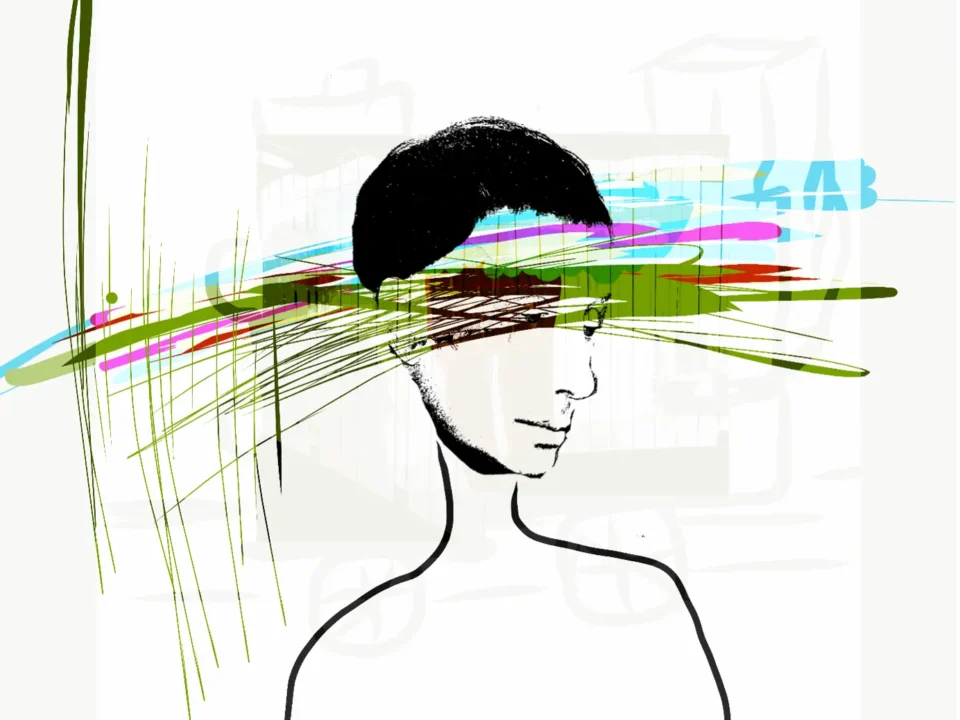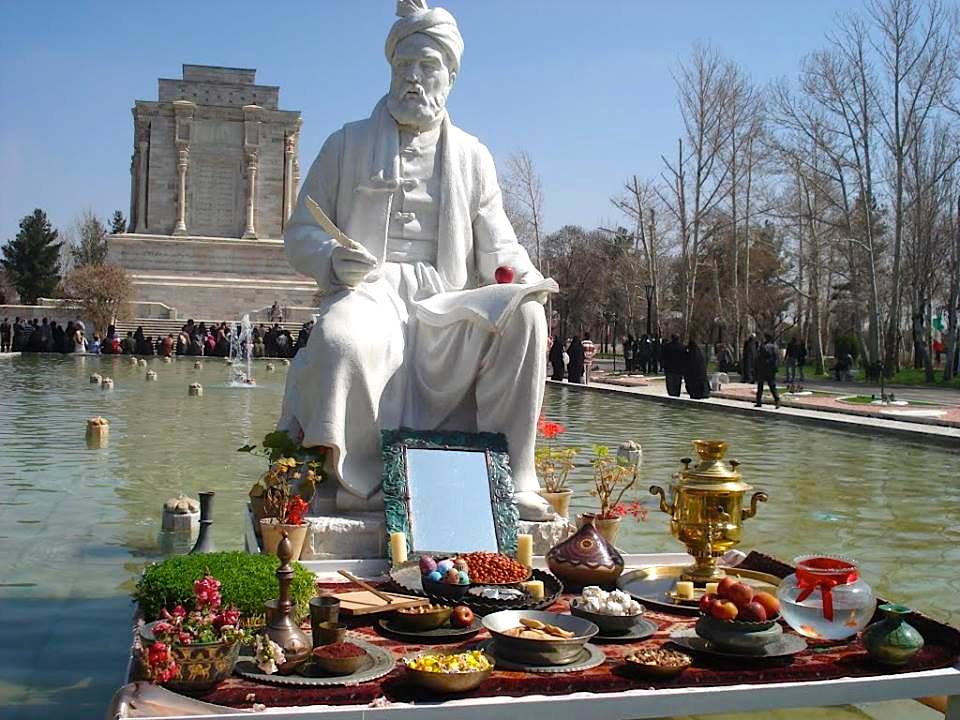
Renew UN Investigations into Iran’s Human Rights Violations
March 18, 2025My Personal Experience
On a sunny Sunday afternoon, when I arrived at the club for a tough squash practice session, my coach handed me a book. He didn’t say much. His request was simple: “Please read this book, and if you don’t find it useful, pass it on to someone who might need it.”
In the six months leading up to that moment, I had cancelled many practice sessions due to physical pain that seemed to have no clear cause. Little did I know that this book would help me gain a troubling understanding of how trauma had affected my body.
The book I received in the summer of 2017 was “The Body Keeps the Score: Brain, Mind, and Body in the Healing of Trauma” by Dr. Bessel van der Kolk. In Amsterdam, on the tram ride home from the club, I opened the book and started reading. I hadn’t even finished the introduction when I realized that I had never taken my traumas seriously. What I had dismissed as simple physical pain was, in fact, a sign of deep-seated traumas that had secretly controlled my life for decades. The impact of the trauma was so severe that it had led to PTSD, and I was unaware of it.
Psychological Effects of Trauma under the Islamic Republic of Iran
Trauma is a psychological response to one or more events that pose a threat to life or cause severe stress. When a society collectively experiences trauma—whether through war, political repression, or social instability—the psychological effects extend beyond individuals and permeate the cultural and political fabric of that society. As Laub and Auerhahn explain, “Collective trauma can profoundly affect the meaning systems that underpin any culture and fundamentally change how people relate to each other, to the government, and even to themselves.”
The “Woman, Life, Freedom” movement is a powerful example of the trauma inflicted on the new generation of Iranians by the Islamic Republic of Iran. This movement, which emerged after the tragic death of Mahsa Amini, was led by women fighting for freedom and justice and faced a brutally repressive response from the regime. Many young people and children were arrested, with numerous reports of rape and torture against them. This repression created a new wave of trauma, particularly among young Iranians, hardening an atmosphere of continuous fear and oppression.
Despite these challenges, Iranian women have shown extraordinary resilience and courage, inspiring women’s rights and social justice movements worldwide. Their leadership in the “Woman, Life, Freedom” movement is a testament to their strength and determination, even in the face of the harshest adversities. However, the traumas imposed by the Islamic Republic of Iran continue to cast a heavy shadow both over those who remain in Iran and Iranians abroad.
For those who have survived such traumatic experiences, the psychological effects can be profound. Many of these individuals will struggle with post-traumatic stress disorder (PTSD), anxiety, and depression—conditions that can severely impact their daily functioning and quality of life. According to the American Psychological Association (APA), trauma survivors often experience intrusive flashbacks, severe anxiety, and prolonged periods of depression.
The Body Keeps the Score: How Trauma Reshapes the Brain and Body
Trauma has deep effects on the body and brain, fundamentally altering how individuals perceive and respond to the world. In his seminal book “The Body Keeps the Score” (2014), Dr. Bessel van der Kolk explains how it can rewire the brain and change the body’s physiological responses. According to him, trauma affects the most primitive areas of the brain, including the brainstem and the limbic system, which are responsible for survival instincts, emotions, and memory. These changes can drastically alter how a person processes emotions, responds to stress, and even perceives physical sensations.
Neurobiological Effects of Trauma
Van der Kolk explains that trauma can cause the brain to remain in a state of “hyperarousal,” where the fight-or-flight response is constantly activated. This means that trauma survivors often live in a state of perpetual anxiety, as their brains remain on high alert for potential threats. This hypervigilance is not just a mental state but a physical one, where the body is flooded with stress hormones like cortisol and adrenaline. Over time, these elevated hormone levels can lead to chronic health issues, including heart disease, high blood pressure, and digestive problems.
One of the key neurobiological effects of trauma is the alteration in the brain’s ability to integrate sensory information and memories. Van der Kolk notes that trauma can disrupt the functioning of the prefrontal cortex, the part of the brain responsible for logical thinking and decision-making. This disruption can make it difficult for trauma survivors to regulate their emotions and even feel safe in non-threatening environments. The amygdala, the brain’s threat detection center, becomes more active, while the hippocampus, responsible for contextualizing memories, often shrinks. This imbalance can lead to fragmented and intrusive memories of the traumatic event, which can unexpectedly surface and trigger intense emotional and physical reactions.
A Past Shaped by Trauma
To understand the depth of this experience, we must return to the turbulent time of the Iranian Revolution in 1979. Like millions of other Iranians, I was caught in a wave of political and social instability that transformed my country. By the age of 16, I faced unimaginable brutality at the hands of the new government, and my life was completely altered. I was denied the right to continue my education, imprisoned multiple times, and subjected to horrific physical assaults. One of these attacks was so severe that I was confined to a bed for over six months, and my body is still struggling to recover from that violence.
The most violent attack came when I was just 17 years old. It immersed me into a world of violence and fear. The day I was attacked with my comrades became a nightmare that remains in my mind to this day. It coincided with the beginning of what the Islamic Republic of Iran called the “Cultural Revolution,” a day when all universities were closed to suppress protests. In my small town, student associations were attacked. Before they reached us, the assailants had already attacked various parts of the town, and the entire city was in shock. These attackers, who were mostly groups of petty criminals turned revolutionaries, targeted those, like us, who did not align with the regime’s beliefs and opposed the closing of universities. They went after those who sought freedom and opposed the restrictions. The attack left me with a broken back and a lifetime of pain, both physical and mental. I can say that it fundamentally changed me.
The Hidden Cost of Trauma
The hidden nature of trauma does not mean the absence of symptoms, but rather that trauma can quietly affect a person’s life. As Dr. Bessel van der Kolk points out, “Trauma cannot be fully expressed in words and is constantly manifesting physically” (van der Kolk, 2014). For me, this trauma manifested as chronic pain, sleep disturbances, and severe anxiety problems that did not respond to any treatment. These symptoms not only affected my daily life but also robbed me of any sense of security and peace.
Similarly, for many trauma survivors in Iran, the effects of trauma manifest in various ways. These effects include chronic illnesses, mental health problems, and damage to social relationships. According to the World Health Organization (WHO), “Most trauma survivors face mental health disorders such as PTSD, depression, and chronic anxiety, and many may also suffer from physical problems like heart disease, diabetes, and gastrointestinal diseases.”
Cultural Silence on Trauma
Trauma is not just an individual issue but is deeply connected to cultural and social matters. In various cultures, especially in societies under political repression, discussing trauma is often taboo. In Iran, due to cultural and social pressures, many people are left alone and helpless with their traumas.
Trauma in oppressed societies is often viewed as a sign of personal weakness or incapacity. Research from Harvard University states, “In cultures where self-restraint and maintaining appearances are key values, individuals may avoid talking about their mental health issues, especially when these issues stem from cultural or political traumas” (Harvard University, 2020).
Trauma in Exile
For those forced into exile, trauma continues. Exile is not just separation from home and family, it is also accompanied by additional pressures from living in different cultures and a sense of homelessness. Various studies show that “exile can lead to a deep sense of separation and limited access to supportive resources, which can exacerbate feelings of trauma and anxiety” (Refugee Studies Centre, 2021).
Although exile can provide opportunities for rebuilding identity and strengthening individual capabilities—many exiles have successfully established new support networks and sought new opportunities for a better life—these opportunities are rarely without emotional and psychological costs, and many of these individuals continue to struggle with the effects of trauma.
Impact on Relationships and Social Interactions
Trauma can significantly affect an individual’s relationships with others. Issues like trust, emotional closeness, and the ability to communicate effectively can be severely impacted. Van der Kolk explains that trauma can lead to severe difficulties in social interactions and says, “People may feel that they cannot trust others or fully participate in emotional relationships” (Van der Kolk, 2014).
Trauma can also lead to problems in social interactions and family life. Individuals may become isolated and emotionally detached, unable to connect effectively with others. This can lead to increased loneliness and feelings of abandonment, significantly impacting a person’s mental health.
Healing through Collective Memory and Justice
One of the fundamental steps in healing from trauma is acknowledging and honoring collective memory. For trauma survivors, particularly in societies under repressive regimes, collective memory can serve as a powerful tool for healing. It provides a shared space where individuals can express their experiences, find validation, and work towards justice.
A society’s ability to recognize and address its collective traumas is crucial for moving forward. According to trauma experts, “The acknowledgment of collective memory allows for a process of collective healing and can play a significant role in reconciliation and rebuilding trust” (Laub & Auerhahn, 1993).
Trauma is an inseparable part of the human experience, especially for those who have lived under political repression and constant fear. The trauma imposed by the Islamic Republic of Iran has left deep scars on millions of Iranians, both inside and outside the country. Understanding and addressing the psychological, physical, and social effects of trauma is critical to healing and rebuilding a healthy society.
As individuals and as a community, we must not only recognize our traumas but also actively work toward healing. Whether through therapy, social support, or collective memory, the path to recovery begins with acknowledging the past and working toward a future free from fear and oppression.
APA. (2017). Post-Traumatic Stress Disorder. American Psychological Association
Harvard University. (2020). Cultural Factors in Mental Health. Harvard University Press.
Laub, D, & Auerhahn, N. (1993). The Treatment of Trauma: A Review. Journal of Trauma & Dissociation.
Refugee Studies Centre. (2021). The Impact of Exile on Mental Health. Refugee Studies Centre Reports.
Social Support Research. (2022). The Role of Social Support in Trauma Recovery. Social Support Research Journal.
Van der Kolk, B. A. (2014). The Body Keeps the Score: Brain, Mind, and Body in the Healing of Trauma Penguin Books.
WHO. (2018). Mental Health and Substance Use, World Health Organization





